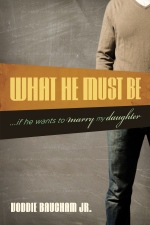 Recently, Dr. Dan Wallace made news about the discovery of what is possibly the earliest NT MSS fragment ever found. I gave details on the find here.
Recently, Dr. Dan Wallace made news about the discovery of what is possibly the earliest NT MSS fragment ever found. I gave details on the find here.
Well, Dr. Wallace was recently interviewed by Hugh Hewitt on his radio show about the discovery and gave additional details. We now know the MSS contains part of one papyrus leaf, written on both sides. From the sound of it, it is most of one leaf so several verses but not much more. It was also found in Egypt — all seven of these MSS finds were found there. Dr. Wallace will also be on of the authors of the book that will publish all seven papyri fragments in early 2013.
Wallace continues to consider this a truly monumental manuscript find, as the following snippet from the full interview makes clear:
HH: Wow. Now in terms of, for the lay audience, Professor Daniel Wallace, the significance of this work when it appears, how would you grade it, with an A being a Dead Sea Scroll sort of significance, and you know, flunking, it just doesn’t matter?
DW: I would grade it at least an A, maybe an A+.
HH: And will the rest of the scholarly world agree with you on that assessment, do you think?
DW: I think that when they understand the ramifications of the entire nature of this manuscript that I’m not at liberty to mention, yes. They’re going to understand. At least those that will accept that date. Since the manuscript doesn’t have a date stamp on it, it says it was done this year, there are always going to be dissenters. But to do the work of paleography takes thousands and thousands of hours of research to do one.
I’m not sure the discovery will prove to be the equal of the Dead Sea Scrolls, but I’m cautiously optimistic that it will prove to be very consequential.
I also got an update from Matthew Hamilton who I quoted in my earlier post on this. From his information and that of Wallace from this interview, the following looks to be the list of the 7 manuscripts. Many of these would be the earliest textual witness we have of that Biblical book, if the dates hold true.
- 2nd century homily (sermon) on Hebrews 11
- 2nd century frg. with I Corinthians 8-10
- 2nd century frg. with Matthew
- 2nd century frg. with Romans 9-10
- 2nd century frg. from Hebrews, one side contains 9:19-22
- 2nd century frg. with Luke
- 1st century frg. [part of one leaf] with Mark
For more details read the entire transcript of the Hewitt – Wallace interview, and keep an eye on the Evangelical Textual Criticism blog.
 Over on my team blog,
Over on my team blog, 
